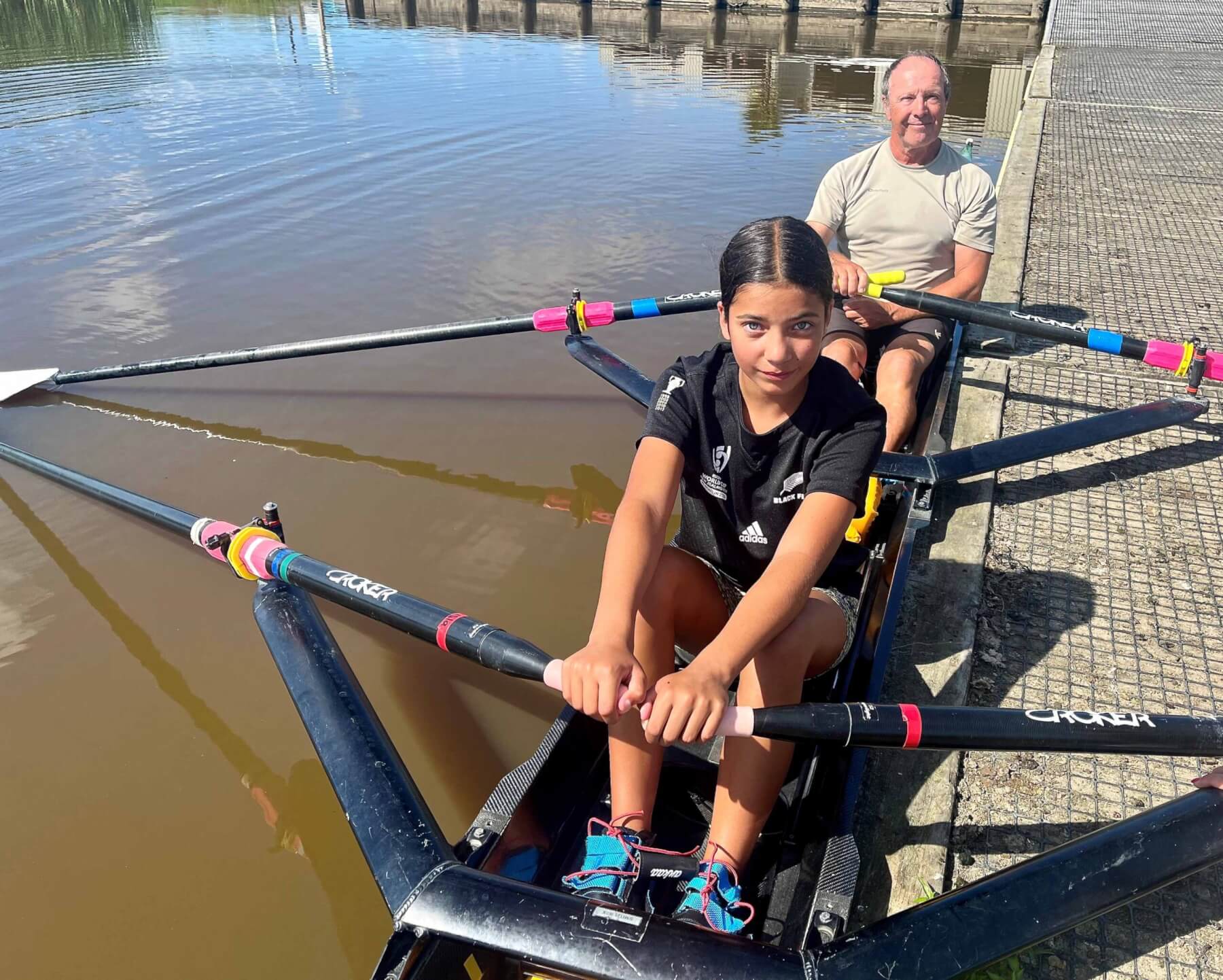
Jade Hood, 12, goes for her first doubles row, with Te Awamutu Rowing Club’s Tony Edmondson teaching her the ropes. Photo: Jeremy Smith
Sitting in the skiff on Sunday, an excited Jade Hood is all smiles.
The 12-year-old Pirongia School student is about to go for her first doubles row – under the watchful eye of the experienced Tony Edmondson.
The News was there as the pair – both Te Awamutu Rowing Club members – set out for the training row on Lake Ngā Roto on Sunday.
“Her coaches have already told her she’s better than I was, and I’m absolutely fine with that,” mum Claire says as the pair depart.
Jade took up rowing barely four months ago in September, likely encouraged by the fact her mum – a former competitive swimmer – is already a masters rower with the Te Awamutu club. Claire reckons Jade, who will attend Te Awamutu College next year, has already set her rowing sights high.
“She does lots of other sports at the moment, but I’m sure rowing is the sport she will stick with most in the long term.”
Jade has already mentioned wanting to compete at the Maadi Cup – New Zealand, and the Southern Hemisphere’s, ultimate secondary schools rowing event.
Last year, more than 2000 rowers competed in over 400 races across 52 events at Lake Karāpiro.
All told, 156 medals were won by 49 schools.
And, when she’s eligible, Jade wants to be one of those future winners.
Other Te Awamutu Rowing Club members out for an early morning training session on Sunday included Aaron and Pip Leppard, who row as a mixed double.
The pair are among 12 Te Awamutu club rowers – eight women and four men – preparing to compete at this weekend’s masters regatta, the 2024 Dewar Shield Blue Lake Regatta held on Rotorua’s Lake Tikitapu, or Blue Lake.
Te Awamutu Rowing Club regatta secretary Ann Edmondson said this weekend’s event will be a good gauge ahead of other events which are on the club’s competitive radar – including the North Island Rowing Club championships at the end of the month, and next month’s New Zealand Rowing Championships.
Club members are being extra vigilant to clean and wipe down rowing skiffs after each training session in light of a public health warning in November following a significant increase in the lake’s cyanobacterial levels.
The cyanobacterial species present produces toxins which can cause serious illness.









